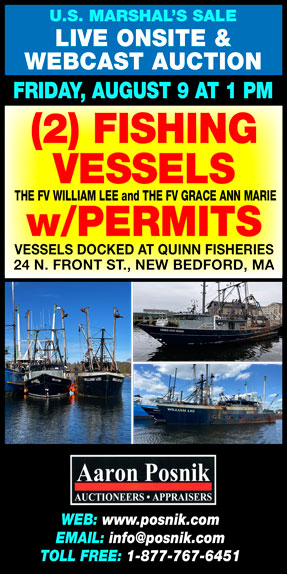 With the crises enveloping the groundfish, scallop, lobster, and northern shrimp fisheries, everyone in the Northeast commercial fishing industry is exhausted. It’s understandably difficult for people to even think about redirecting time and energy to wrap their minds around one more threat to the future.
With the crises enveloping the groundfish, scallop, lobster, and northern shrimp fisheries, everyone in the Northeast commercial fishing industry is exhausted. It’s understandably difficult for people to even think about redirecting time and energy to wrap their minds around one more threat to the future.
But we must.
After years of talk, the US is now ready to industrialize the ocean, and that means other users, including offshore wind energy developers, will be competing with fishermen for exclusive access to the seabed.
If we fail to learn what’s happening, figure out how we can influence planning processes, and then actually get engaged, wind farms and possibly other large-scale industrial operations will displace fishermen from their traditional grounds.
Some industry members already know this all too well. Nantucket Sound fishermen have been fighting the proposed construction of a 130-turbine wind farm proposed by Cape Wind for more than a decade. Fishermen also were spurred into action in 2011 when the federal Bureau of Ocean Energy Management (BOEM) proposed creating a 2,224-square-nautical-mile streamlined lease area off Rhode Island and Massachusetts that encompassed some of the most productive scallop and groundfish bottom in New England. Other recent BOEM lease offerings have the potential to affect fishermen from Maine to North Carolina.
These ocean development activities have been conducted in a mind-bogglingly piecemeal way, leaving fishing industry organizations to scramble to deal with unanticipated proposals for federal waters projects. And, the seeming lack of understanding of the fishing industry’s historical presence on the ocean has been shocking.
There have been multiple efforts to get ahead of emerging ocean use demands. The states of Massachusetts and Rhode Island have invested heavily in ocean mapping projects to identify areas for fishing, shipping, and other important economic enterprises. The state of Maine has extensively consulted with fishermen to figure out the best places to site pilot wind farm projects.
States have formed organizations – the Northeast Regional Ocean Council (NROC) and the Mid-Atlantic Regional Council on the Ocean (MARCO) – to gather information about current users to help avoid future conflicts.
And, in April, the Obama Administration released its National Ocean Policy Implementation Plan, which formalizes ocean-use mapping activities and spells out concrete actions federal agencies must take to ensure offshore development happens in a way that protects the environment, marine life, and the people who live in coastal communities.
This includes supporting the work of “regional planning bodies” (RPBs) engaged in comprehensive “coastal and marine spatial planning,” known as CMSP. The Northeast and Mid-Atlantic RPBs are just starting to organize and figure out their priorities, but they have a leg up because of the ocean mapping work NROC and MARCO have already started.
Everyone involved acknowledges there is much more to be done to get the public – especially the fishing industry – fully engaged in their information-gathering efforts.
Fishermen’s experience with wind farms in England, introduced in this CFN with more coverage to follow in future editions, brings home how important it is to embrace this new challenge.
Our energy-hungry nation needs alternative power sources, and offshore wind holds tremendous potential to help meet the demand. But, we must arm ourselves with information to help planners identify the grounds that must be preserved for the fishing industry.
Get started by reading the coverage in this issue, and then visit the websites of NROC at <http://northeastoceancouncil.org> and MARCO at <http://portal.midatlanticocean.org> to learn more. Don’t be asleep at the wheel on this one. /cfn/








